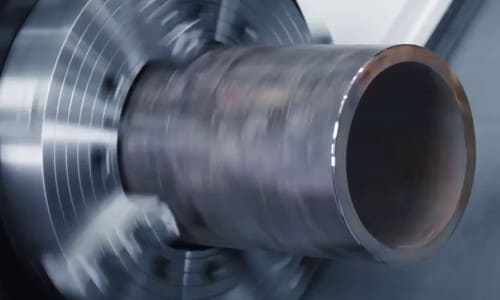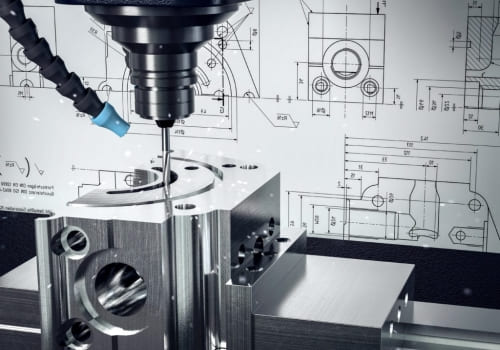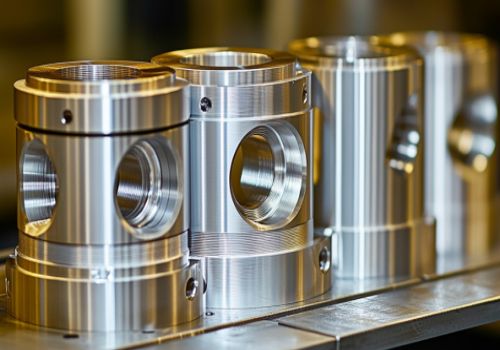During the cutting process, the thin wall is easily deformed by the cutting force, resulting in the appearance of an ellipse, or the phenomenon that the middle is small and the two ends are large. In addition, due to the poor heat dissipation during processing, the thin-walled sleeve is easily thermally deformed, and it is not easy to ensure the processing quality of the parts. The parts shown in the figure below are not only inconvenient to clamp, but also difficult to process the processing area. It is necessary to design a special thin-walled casing and shaft guard.
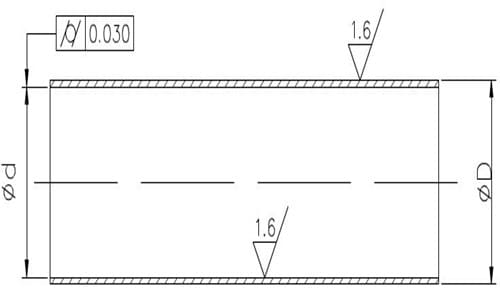
1. Process analysis
According to the technical requirements on the drawing, the workpiece is processed with seamless steel pipes, and the surface roughness of the inner hole and outer wall is Ra1.6μm, which can be achieved by turning, but the cylindricity of the inner hole is 0.03mm, which is high requirements for thin-walled parts. In mass production, the process route is roughly: blanking – heat treatment – turning end face – turning outer circle – turning inner hole – quality inspection.
The “inner hole machining” process is the key to quality control. Aside from the outer circle and thin-walled casing, it is difficult to guarantee a 0.03mm cylinder when turning the inner hole.
2. The key technology of the turning hole
The key technology of turning is to solve the problem of rigidity and chip removal of the inner turning tool. To increase the rigidity of the inner hole turning tool, take the following measures:
A. Try to increase the cross-sectional area of the tool holder. Usually, the tip of the inner hole turning tool is located on the top of the tool holder, so that the cross-sectional area of the tool holder is less than 1/4 of the cross-sectional area of the hole, as shown in the left figure below. If the tool tip of the inner hole turning tool is located on the center line of the tool holder, the cross-sectional area of the tool holder in the hole can be greatly increased, as shown in the right figure below.
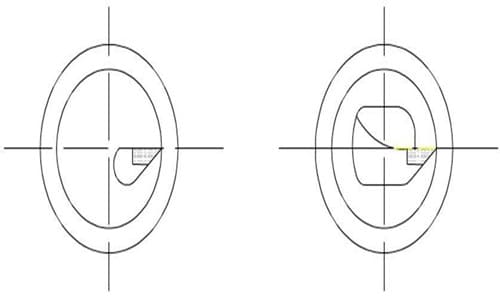
B. The extension length of the tool holder should be as 5-8mm long as the length of the workpiece to be processed, so as to increase the rigidity of the turning tool holder and reduce the vibration during the turning.
3. Solve the problem of chip removal
It mainly controls the cutting outflow direction. The rough turning tool requires the chips to flow to the surface to be machined (front chip removal). For this purpose, an inner hole turning tool with a positive edge inclination is used, as shown in the figure below.
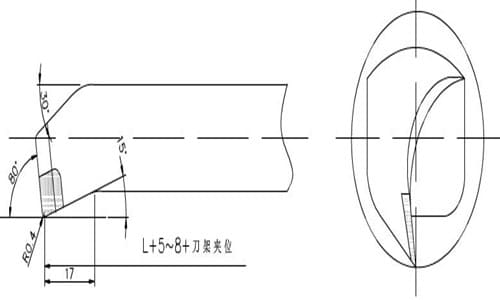
When fine turning, it is required that the chips flow to the centripetal incline for chip removal (hole core chip removal), so when sharpening the tool, pay attention to the grinding direction of the cutting edge, and the method of chip removal by tilting the arc to the front, as shown in the following figure. The cutting tool alloy uses YA6, the current M type, which has better bending strength, wear resistance, impact toughness, and resistance to steel and temperature.
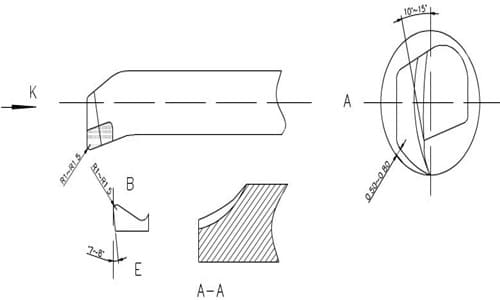
When sharpening, the rake angle is ground with a circular arc-shaped angle of 10°-15°, and the back angle is 0.5-0.8mm away from the wall according to the machining arc (the bottom line of the tool follows the arc), and the c-cutting edge angle is §0.5-1 in the k direction. The wiper edge along point B of the chip edge is R1-1.5, the secondary clearance angle is suitable for grinding to 7°-8°, and the point A-A of the inner edge of E is ground into a circle to discharge chips outward.
4. Processing method
A. A shaft guard must be done before processing. The main purpose of shaft guard: to cover the inner hole of the thin-walled sleeve with the original size, and fix it with the front and rear tops so that the outer circle can be processed without deformation, and the quality and accuracy of the outer circle processing can be maintained. Therefore, the processing of the shaft guard is a key link in the process of processing the thin-walled parts.
45# carbon steel is used for processing the shaft guard blank; turning the end face and the B-shaped top hole at both ends, and rough turning the outer circle, leaving a margin of 1mm. After heat treatment, it is quenched and tempered, and then finished with a 0.2mm margin for grinding. After re-heat treatment, the hardness is HRC50, and then it is ground by a cylindrical grinder as shown in the figure below.
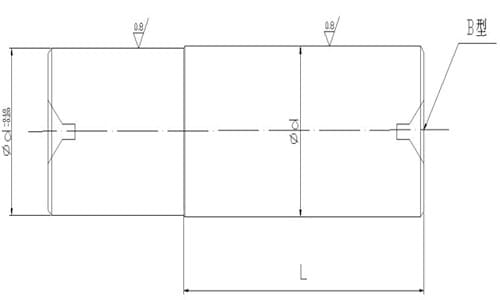
B. To enable the workpiece to be processed at one time, the blank remains in the clamping position and cutting allowance.
C. Heat treatment and tempering to set the rough embryo first, and the hardness is HRC28-30 (hardness within the machinable range).
D. The turning tool adopts C620. First, put the front tip into the taper position of the spindle to fix it. In order to prevent the deformation of the workpiece when the thin-walled sleeve is clamped, an open-loop thick sleeve is added, as shown in the figure below.
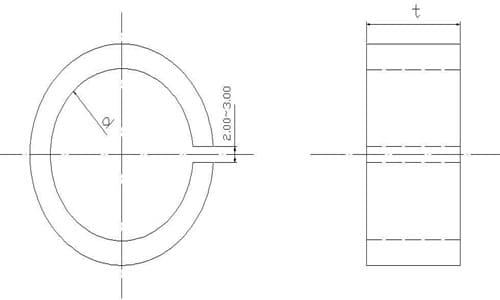
In order to maintain mass production, one end of the outer circle of the thin-walled casing is processed into a uniform size d, and the ruler of t is the axial clamping position, and the thin-walled casing is compressed to improve the quality of the inner hole of the car and maintain the size. Considering the generation of cutting heat, the expansion size of the workpiece is difficult to grasp. It is necessary to use sufficient cutting fluid to reduce the thermal deformation of the workpiece.
E. Clamp the workpiece firmly with the self-centering three-jaw chuck, turning the end face, and rough turning the inner circle. Leave a margin of 0.1-0.2mm for fine turning, and replace the fine turning tool to process the cutting allowance until the shaft guard meets the requirements of excessive fit and roughness. Remove the inner hole turning tool, insert the shaft guard to the front top, clamp it with the tip of the tailstock according to the length requirements, change the outer turning tool to rough turning the outer circle, and then finish the turning to meet the drawing requirements. After passing the inspection, use a cutting tool to cut it according to the required length. In order to make the incision smooth when the workpiece is disconnected, the blade edge should be obliquely ground to make the end face of the workpiece flat; the small section of the shaft guard is ground to leave a gap for cutting, and the shaft guard is to reduce the deformation of the workpiece and prevent vibration.
5. Conclusion
The thin-walled part is processed by the above method, which solves the problem that the deformation or the dimensional error and the shape error cannot meet the requirements. Practice has proved that the processing efficiency is high, easy to operate, and suitable for processing long thin-walled parts, the size is easy to grasp, one-time completion, and mass production is more practical.

